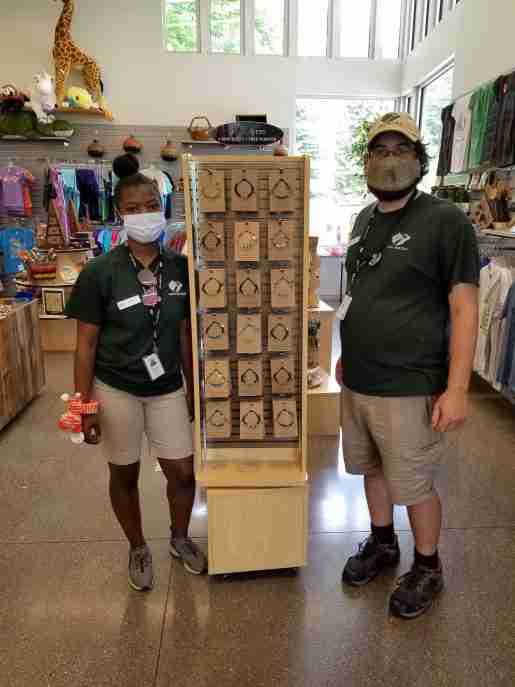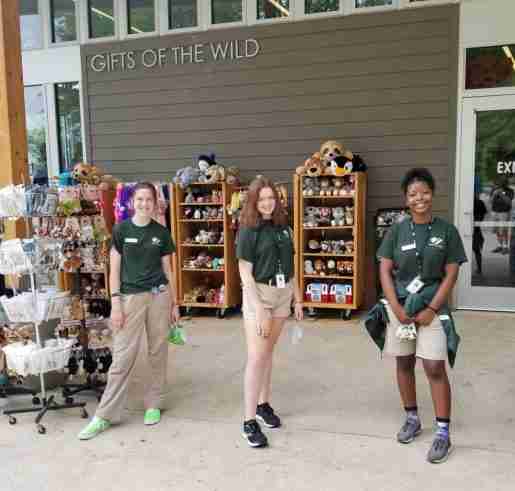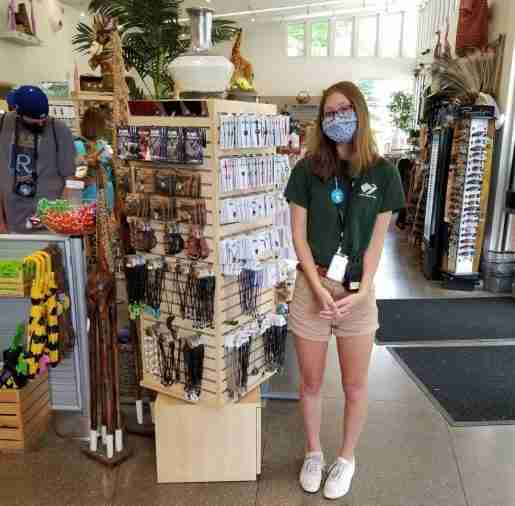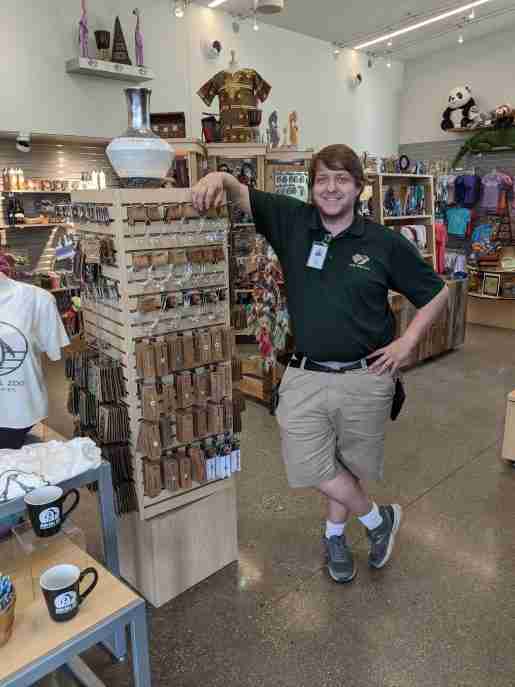Where Jewelry Sales Still Shine The Jewelry Outlook for Zoo Stores |
|
|
|
(Three of the displays in this story were provided by Cool Jewels of Hallandale, Fla.) If you’re looking for a bright spot amid the coronavirus pandemic — some sign that our old way of life still exists — look no further than the jewelry counters at zoo stores. When SGN spoke to retailers in July, everyone interviewed reported that jewelry sales remained strong and tastes had not changed in any significant way. Children still beg their parents for mood rings to go with their souvenir plush, and parents are still happy to buy.  Retail Sales Associates Aliyah Taylor and Nathan Savati of the John Ball Zoo. Mood necklaces are popular at the store. Retail Sales Associates Aliyah Taylor and Nathan Savati of the John Ball Zoo. Mood necklaces are popular at the store.Since the Binder Park zoo clientele is largely families with children, the popular jewelry selection is geared towards younger tastes — and budgets. “It’s not like Macy’s, not expensive stuff,” said Strunk. “The kids really love giraffes made out of sparkly rhinestones, mood jewelry, things like that.”  Sales Associates Aliyah Taylor, Christina Young and Charity Fields, Sales Associates Aliyah Taylor, Christina Young and Charity Fields,photographed outside the John Ball Zoo gift shop in Grand Rapids, Mich. Much of the store’s retail inventory has been moved outside in response to the pandemic. “We really haven’t made any changes,” said Tomko-Watterworth. Not to the inventory, perhaps — but as at many zoo and aquarium gift shops, much of John Ball Zoo’s retail action has moved outside to allay guests’ anxiety about possible contagion in enclosed spaces. As a precaution, no more than 20 shoppers are allowed at one time inside the relatively large gift shop, and many prefer to browse in the open air rather than wait in line to enter at socially distanced intervals.  Retail Sales Associate Olivia Tucker of the John Ball Zoo. No more than 20 shoppers are permitted in the store at a time as a COVID-19 precaution. Retail Sales Associate Olivia Tucker of the John Ball Zoo. No more than 20 shoppers are permitted in the store at a time as a COVID-19 precaution.Jewelry sales at the Saginaw zoo were steady before the pandemic forced a shift in retail operations. Stretchy bracelets featuring natural stones and recycled materials sold well last year, but with delayed shipments and an uncertain supply chain, Beneker still hadn’t received this year’s order as of mid-July. If there’s an upside to the situation, it’s that the new outdoor retail area is impossible to avoid, even for patrons who would have ordinarily skipped the indoor gift shop. “Now that we are outside, they kind of have to pass by us, so things are going pretty well considering the situation,” Beneker said.  John Ball Zoo Retail Supervisor Liam Tomko-Watterworth. Jewelry priced under $10 is a hit for the store’s young shoppers, Tomko-Watterworth said. John Ball Zoo Retail Supervisor Liam Tomko-Watterworth. Jewelry priced under $10 is a hit for the store’s young shoppers, Tomko-Watterworth said.But sales of mood rings and earrings was stable until last spring’s three-month COVID closure. Ever since, Workman has been hesitant to change the store’s inventory, given the ongoing uncertainty around the pandemic. That’s especially true for the mood rings that sell briskly in summer, but tend to be less popular the rest of the year. “We don’t know if we’re going to have to close down again,” Workman said. |
